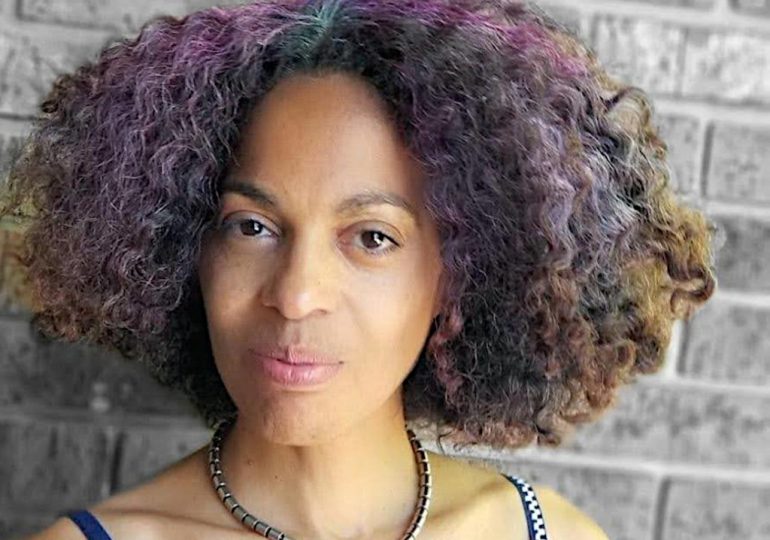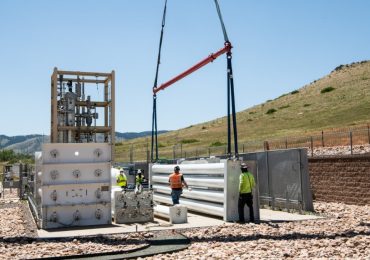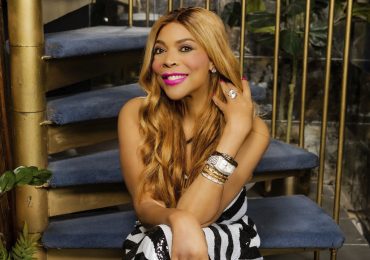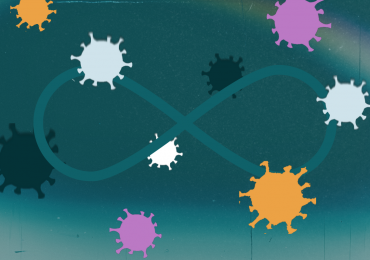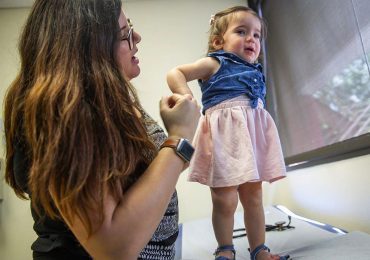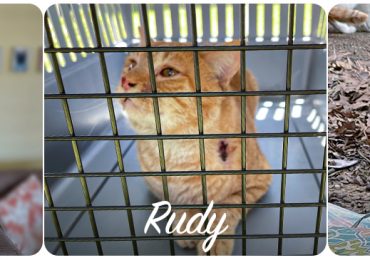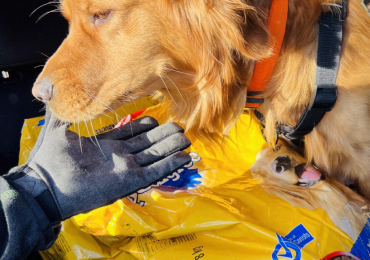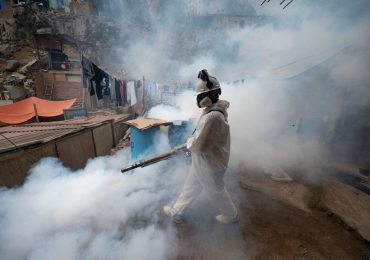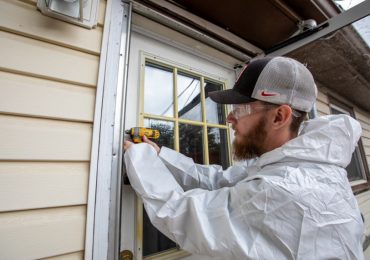As a longtime fan of George Clinton — a funk pioneer who bent and blended multiple music genres with science fiction imagery — Chicago-based artist Cydney Lewis always had a sense of consciousness beyond the limits of the physical plane.
But she wasn’t aware of the larger Afrofuturism movement and its connection to real-time issues like climate change until the early 2000s. That’s when she saw notices for classes on Afrofuturism at Columbia College Chicago — and subsequently read the influential text Afrofuturism by author, artist, and fellow Chicagoan Ytasha Womack.
“Oh, they got a name for this,” Lewis said. “But it was something that I’ve always loved…I’ve always thought the whole Afrofuturistic idea — past, present, future — spirituality with science, it’s all, to me, always been one.”
Afrofuturism has been intrinsically connected with real-time social and environmental issues even before the movement had a name. Sociologist and activist W.E.B. Du Bois speculated about the questioning of racism in the face of the catastrophic destruction of New York City by an errant asteroid in his 1920 short story The Comet. Iconic African American science fiction writer Octavia Butler presented a dystopian vision of a society ravaged by climate change in 1993’s Parable of the Sower.
More recently, the Black Panther graphic novel series and movies showcased the isolated but technologically advanced fictional African nation of Wakanda, powered largely by the amazing substance “Vibranium,” with its promise of a means to literally save the world from climate change, poverty and other ills.
For Lewis, Afrofuturism reflects but a single aspect — albeit an essential element — of African culture both on the continent and across the diaspora: It draws a large proportion of its resiliency from a fundamental interconnection between the spiritual and the natural worlds. Through Afrofuturism, Black people can visualize themselves as active agents; movers and shakers in a future world — a departure from the largely White male-dominated genre of conventional science fiction.
“One of the things that I have studied and paid attention to is the spirituality within our culture as African and the African diaspora,” Lewis said. “How everything was from ancient cultures, everything was always based off of spirit and being one with nature and being one mind, body and spirit. And it’s all the same.
“Part of Afrofuturism is taking that history of spirit and using it for the future of seeing yourself in the future, of always knowing that you’re bigger than just yourself. It’s bigger than just you. It is futurism, period… So, my work is just really about what are the possibilities? What can be a possibility and why don’t we believe it?” Lewis said.
Earthly visions
Integration between the physical, the spiritual and social reality plays a prominent role in Lewis’s works, three of which were featured in a recent exhibition at Gallery 400 on the University of Illinois at Chicago campus titled Earthly Visions: Inside the Climate Crisis, one of a series of ecologically focused shows. Invited artists were tasked with creating representations that reflect societal reactions to climate change in a way that looks beyond the traditional approaches to environmental issues.
Lewis’s contributions to the show from her Terrain Vague series both reflected and utilized materials common to Bronzeville, a predominantly Black community on Chicago’s Near South Side, with a connection to climate change.
“As a group we discussed several of Cydney’s series, finally deciding that her Terrain Vague series brilliantly combined multiple threads of interest to us,” Gallery 400 director Lorelei Stewart said in an email.
Incorporating mundane materials and discarded objects — items viewed as having little or no intrinsic or remaining value — into her artwork reflects Lewis’ desire to provoke thought about what is valued in society and what is considered trash or refuse.
For example, during the 1990s, Lewis incorporated plastic shopping bags into much of her work. At the time, many retail and commercial operations offered durable plastic shopping bags that shoppers were encouraged to reuse. Even ecologically conscious operations like Whole Foods gave shoppers the option of “paper or plastic,” stating that their plastic bags were manufactured with water-based inks and recycled materials.
“When I first began this journey of really taking my artwork seriously, I began to just look around at my environment. I didn’t want to go to the art store. I didn’t want to buy things,” Lewis said. “I very much had an understanding that the climate was changing and that global warming was happening. And at that time a lot of plastics were everywhere. And so, I just wanted to just use what we had that we didn’t value that was discarded. We have these materials and we don’t know what to do with them.
“We never really dealt with the fact that these (plastic bags) were harmful. We hadn’t yet converted back to paper. We had taken paper out. You remember Whole Foods. They were all paper. And then they went to plastic, and then they went back. So, we’re still asking these questions. We’re not really solving anything. We’re just asking the same questions.”
In some cases, the found materials in Lewis’s works are discards, like sections of synthetic hair that resemble tufts of tumbleweed, that also reflect the proliferation of beauty salons and dollar stores in many predominantly Black communities — that in a sense represent compensation for the lack of robust commercial and other resources in disinvested BIPOC communities.
“As I’m walking in my community, I see things like hair on the ground, which I think an animal [shed]. And then I find out it’s just synthetic hair. It looks like when you’re in the wild, wild west and those bushes go by.
“They were opening up huge beauty supply stores [in Black communities] dedicated to hair. This was early on, maybe in the 2000s. I started to use that in my work. A lot of times I go to the dollar store because that’s in my community. Beauty supply stores are all over. That’s easy access, it’s cheap. It’s things we discard, we don’t really value,” Lewis said.
‘There’s always light’
For Lewis, the climate crisis, disinvestment and social issues are inseparable but not insoluble. Her works also reflect the inspiration she draws from nature and the resilience of the human species — and especially Black, Brown and Indigenous people — in facing adversity by balancing the looming despair of the climate crisis against the hope of adaptation to mitigate its adverse effects.
“And so, for me, resilience is really important because with that, you have to adapt and you have to be able to move and change. … I really want [people] to be able to see in the future or be able to have some sort of imaginative concept that there is in the darkness … there’s always light.
“I feel like nature’s already figured all this out. And if we paid attention to biodiversity and what’s going on in our ecological system, then we could learn more. Maybe if we change the value system a little bit, maybe caregiving, things that we don’t really value and put a lot of money towards. Maybe if we start to value those things, we might be able to survive.”
For a Chicago artist, Afrofuturism inspires a vision for confronting climate change is an article from Energy News Network, a nonprofit news service covering the clean energy transition. If you would like to support us please make a donation.
Leave a comment

